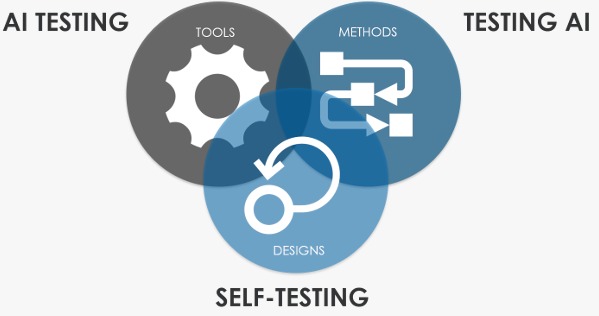In today’s world, the pervasive presence of Artificial Intelligence (AI) has significantly transformed various aspects of our lives. From intelligent virtual assistants to autonomous vehicles, AI technology has revolutionized multiple industries and brought about substantial changes. It has enabled businesses to streamline their operations, automate tasks, and enhance overall efficiency. Among the many areas where AI has made a remarkable impact, software testing stands out, as it has greatly accelerated and simplified the testing process.
Traditionally, quality assurance (QA) engineers heavily relied on manual testing, which was time-consuming and often insufficient to thoroughly test software. They had to perform repetitive tests each time the software underwent updates or modifications in the test code. However, with the introduction of automated testing, QA engineers can now test software with minimal manual effort, ensuring high efficiency and delivering superior results.
Nevertheless, relying solely on test automation may not be enough to achieve high-quality software testing, as it requires significant time and effort to develop test scripts. The combination of AI and test automation has proven to be more effective, as it can detect changes in controls and even subtle alterations in algorithms. Moreover, in the context of agile software development, which coincided with the rise of automation, QA teams can deliver robust and bug-free software in small iterations, resulting in a more reliable end product.
AI testing, specifically cognitive automation, is a subset of AI that utilizes advanced technologies such as natural language processing, data mining, and text analytics to tackle challenges related to human intelligence.
This article aims to explore AI testing and shed light on how AI technology has revolutionized the testing process, enabling more efficient and effective testing methodologies.
Automated Test Case Generation
An excellent application of AI in software testing can be observed in the automated generation of test cases. Machine learning is employed to automatically create test cases for software through a process called spidering. By pointing AI/ML tools to the application, the crawling process begins, collecting useful data such as screenshots, HTML of each page, and page load time. This iterative cycle continues until enough data is gathered to train the ML models in recognizing patterns within the application.
When executed, the tools compare the current state of the application with the learned patterns. If any deviations, such as visual differences, slower page load times, or other errors, are detected, the tool flags them as potential issues. However, if the differences are valid, such as new UI design changes, the tester needs to validate the flagged issues as bugs.
Automated Visual Validation
AI and ML-powered automated visual validation tools are gaining popularity for image-based testing. This type of testing verifies that the user interface (UI) appears correctly to users, not just functional testing. Visual testing ensures that the UI elements are appropriately sized, positioned, colored, and do not overlap with other UI elements. These tests are often challenging to automate, making them ideal for AI testing. Leveraging AI/ML-based visual validation tools helps detect visual bugs in applications that QA testers may overlook, ensuring visual correctness.
Enhanced Accuracy and Reliability
Conventional testing still relies on human resources for data and source analysis, making room for mistakes and overlooked bugs. Machine learning in software testing addresses this by training systems to understand source analysis and apply acquired knowledge in the future. AI testing technology yields more accurate outcomes, reduces human error probability, shortens test run time, and identifies every possible defect. This enables QA teams to handle large volumes of data more effectively, leading to improved accuracy and reliability.
Advanced Test Coverage
The combination of AI and test automation significantly enhances the scope and depth of quality assurance tests, resulting in improved software quality. AI-based automated testing accesses memory, file content, data sets, and more to determine the software’s working status. AI tools can execute thousands of test cases per test run, providing extensive coverage that would be nearly impossible with manual testing.
When changes are made to the code, AI/ML tools precisely identify the minimum number of tests required to test those changes. The tools analyze the current test coverage and highlight areas with low coverage or at risk. In summary, AI/ML tools assist in selecting the appropriate tests to execute for code changes, ensuring quality test coverage.
Cost Reduction and Faster Time to Market
Manual testing is known to be time-consuming, expensive, and inefficient in providing a speedy test process. Integrating AI or ML in software testing automates time-consuming and repetitive tasks, relieving QA engineers from writing test scripts and investigating large data sets. Automated testing, coupled with code adjustments to fix bugs or defects, eliminates the additional costs associated with repeating tests. It accelerates the testing process, saving time, money, and effort, ultimately enabling the software to be launched in the market within the desired timeframe.
Conclusion
AI has made a profound impact on software testing, revolutionizing the way tasks are automated, improving accuracy, and introducing significant advancements. It has become an invaluable asset for businesses, simplifying, speeding up, and enhancing the testing process. Testers now have the opportunity to move away from traditional approaches and embrace AI-powered testing methods. As AI technology continues to advance rapidly, we can anticipate even more critical enhancements in software testing. The time has come to embrace AI testing and leverage its benefits.
Thank you for reading. For continued insights and in-depth discussions, please follow our blogs at Ezeiatech.







